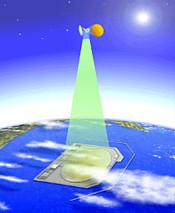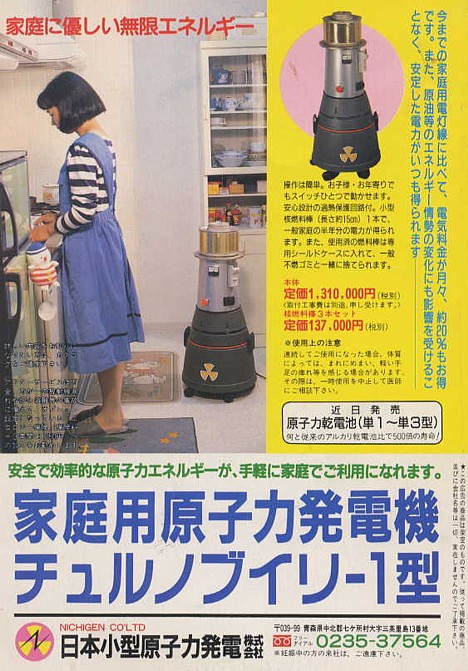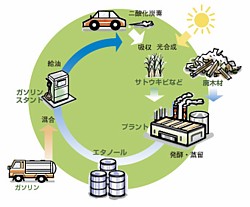
Japan's Ministry of Economy, Trade and Industry (METI) has released a few details about the "Zero Emission House," a state-of-the-art green home under construction at the site of the upcoming Hokkaido Toyako G8 Summit, where environmental issues will be high on the agenda.
Incorporating the latest in sustainable building technology, the 280-square-meter (3,000 sq ft) Japanese-style home is designed to have a small carbon footprint. A 14.5-kilowatt solar array and a small 1-kilowatt wind generator provide power to the home, which is equipped with next-generation energy-saving appliances, thermal insulation glass, vacuum insulated panels and a green roof. The interior is illuminated by a system of light ducts and OLED lamps.

Honda's Asimo humanoid robot -- whose exact carbon footprint size is unknown -- will be on hand to serve tea to guests, who are welcome to test-drive the electric vehicles in the driveway and soak their feet in the fuel cell-powered foot bath.
Construction of the 200 million yen ($2 million) home is scheduled for completion at the end of June, at which time it will be unveiled to the foreign press. After the summit, plans are to transport the house to another location, where it will be opened to the general public.
[Source: METI]


 JAXA says the orbiting solar arrays, which have the advantage of being able to collect energy around the clock regardless of the weather on the ground, will need to transmit microwaves through the earth's atmosphere at frequencies that are not affected by the weather. The researchers are now looking at using the 2.45GHz and 5.8GHz bands, which have been allocated for use with industrial, scientific and medical devices.
JAXA says the orbiting solar arrays, which have the advantage of being able to collect energy around the clock regardless of the weather on the ground, will need to transmit microwaves through the earth's atmosphere at frequencies that are not affected by the weather. The researchers are now looking at using the 2.45GHz and 5.8GHz bands, which have been allocated for use with industrial, scientific and medical devices.  In a development that brings space-based power generation systems a step closer to reality, researchers from the Japan Aerospace Exploration Agency (JAXA) and the Osaka University Institute of Laser Engineering have developed groundbreaking new technology for converting sunlight into laser beams.
In a development that brings space-based power generation systems a step closer to reality, researchers from the Japan Aerospace Exploration Agency (JAXA) and the Osaka University Institute of Laser Engineering have developed groundbreaking new technology for converting sunlight into laser beams.  Unlike earthbound solar power stations, which are subject to night-time darkness and cloudy conditions, JAXA's SSPS will be able to make use of solar energy 24 hours a day. With slight improvements in the solar-to-laser conversion efficiency and by incorporating solar collectors measuring 100 to 200 meters long, a single satellite will be able to match the output of a 1-gigawatt nuclear power plant, the researchers say. One can only hope these lasers never
Unlike earthbound solar power stations, which are subject to night-time darkness and cloudy conditions, JAXA's SSPS will be able to make use of solar energy 24 hours a day. With slight improvements in the solar-to-laser conversion efficiency and by incorporating solar collectors measuring 100 to 200 meters long, a single satellite will be able to match the output of a 1-gigawatt nuclear power plant, the researchers say. One can only hope these lasers never 
 On March 22, a group of Japanese scientists released details of an ambitious proposal calling for the large-scale production of bioethanol made from cultivated seaweed.
On March 22, a group of Japanese scientists released details of an ambitious proposal calling for the large-scale production of bioethanol made from cultivated seaweed. On February 6, Nippon Oil (ENEOS), Toyota Motors, Hino Motors and the Tokyo Metropolitan Government announced the launch of a joint project aimed at putting bio hydrofined diesel (also known as BHD, or second-generation biodiesel) into practical use. In 2007, the city will begin trial operation of city buses that run on a 10% BHD-diesel blend.
On February 6, Nippon Oil (ENEOS), Toyota Motors, Hino Motors and the Tokyo Metropolitan Government announced the launch of a joint project aimed at putting bio hydrofined diesel (also known as BHD, or second-generation biodiesel) into practical use. In 2007, the city will begin trial operation of city buses that run on a 10% BHD-diesel blend. 
 On October 19, East Japan Railway Company (JR East) made a test run of its
On October 19, East Japan Railway Company (JR East) made a test run of its 